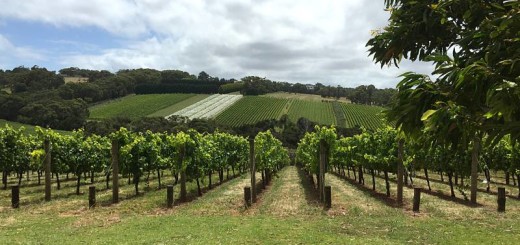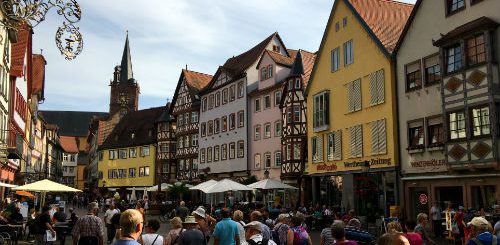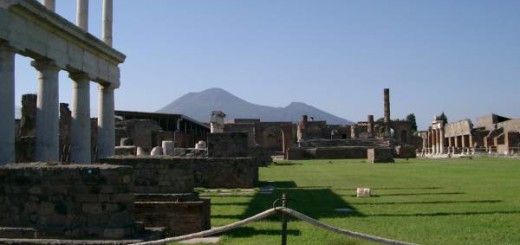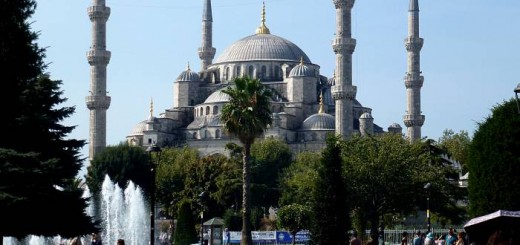A Whirlwind Tour in England’s North East
The fourth day of our coach tour of England, Scotland and Wales took us from Sheffield through York and the Northumberland National Park, with a brief stop at Jedburgh in Scotland, before an arrival late in the afternoon in Edinburgh.
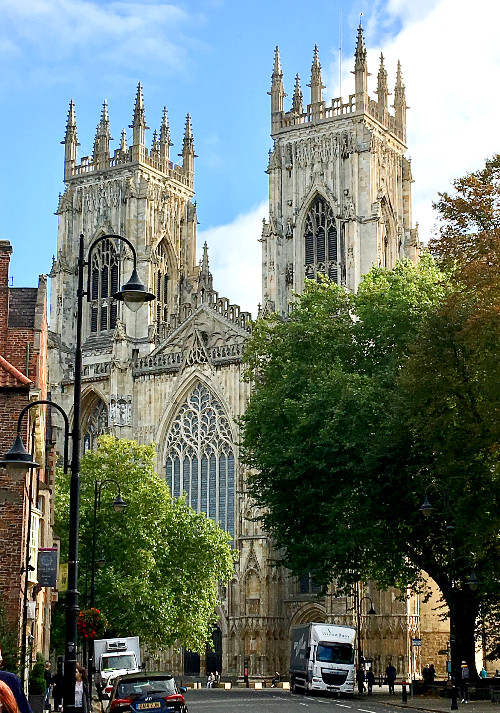
Founded by the Romans in 71 AD, York later flourished as a major trading centre and as the ecclesiastical centre for the north of England due to its location on the River Ouse. Here we stood in awe in front of the great structure of York Minster, the Cathedral of St Peter, one of the largest of its kind in Northern Europe.

Established in 1220 and built in the English Gothic style, it is a huge 160 meters long.
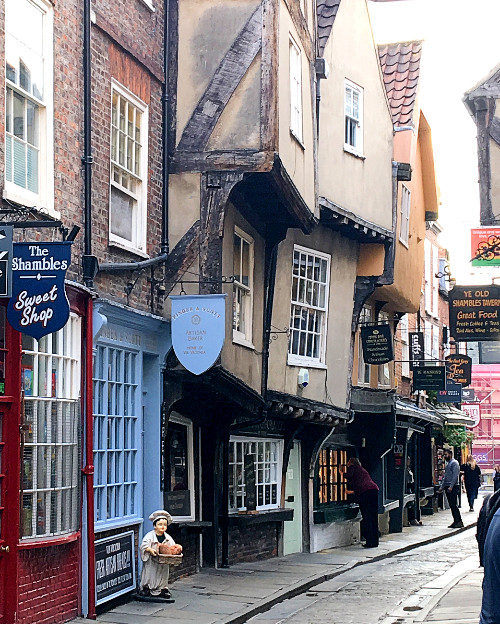
Our tour director led us through a maze of quaint medieval streets to experience the other well known feature in the city of York – The Shambles. This old street is characterised by overhanging timber-framed buildings, some dating back as far as the 14th century. At one time it was the home of 31 butcher’s shops, from which it originally derived its name in the old Anglo-Saxon language. In those days land tax was paid on the footprint of the building, so to maximise the size of the establishments the rooms above were built to cantilever over the roadway.
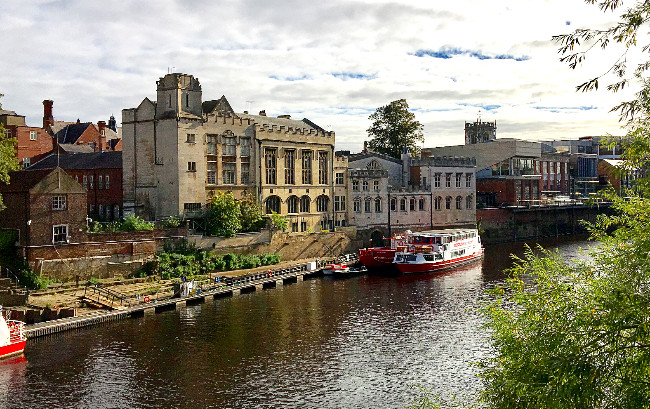
The River Ouse transects the city affording tourists the chance for a sightseeing cruise through the city and beyond. The York Guildhall is the seat of local government. The small grey building was built between 1449 and 1459, and was added to on either side in later years. Much of the original building was destroyed during air raids in 1942, but was rebuilt and re-opened in 1960.
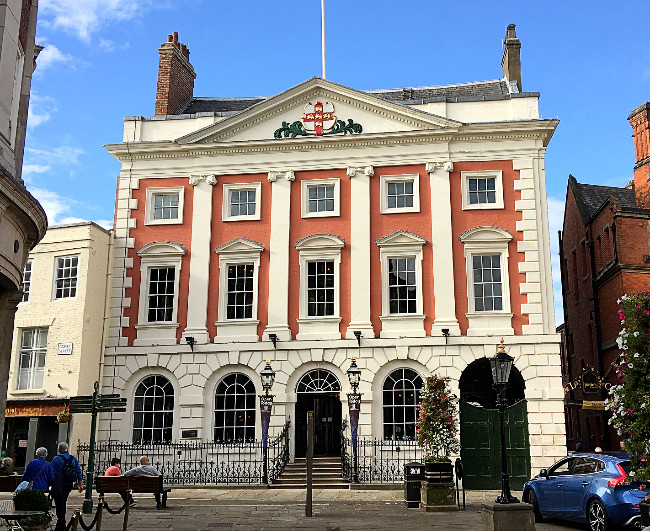
Speaking of local government, York is one of only 15 cities in England to have a Lord Mayor. The Mansion House in York, built in 1732, is the earliest existing purpose-built house for a Lord Mayor in the country. Today the house can be hired for private functions and weddings.
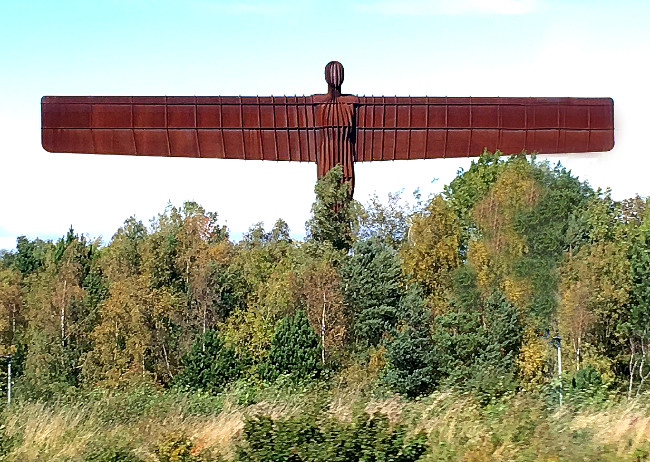
Heading northwards along the A1, we entered the county of Tyne and Wear, to be greeted by the sight of the Angel of the North, a massive steel and copper statue created by Antony Gormley in 1998. It’s believed to be the largest angel statue in the world, measuring 20 metres in height with a wingspan of 54 metres. It was conceived as a landmark sculpture to mark the approach into Gateshead and the site of the former Teams Colliery.

We had seen documentaries about Hadrian’s Wall, a Roman defensive fortification begun in 122 AD during the reign of Emperor Hadrian, that crossed the whole width of England from East to West. It is one of Britain’s major ancient tourist attractions. So it was somewhat disappointing when we stopped for a long-awaited first-hand view of the Wall, in Newcastle-upon-Tyne, to see such a tiny remnant. This was the remains of the Denton Hall turret or watch-tower. These turrets had been built into the Wall roughly 1.5 km apart to provide lookouts and accommodation for soldiers. The 65m length of wall we saw lies alongside the A69 in the middle of suburbia!
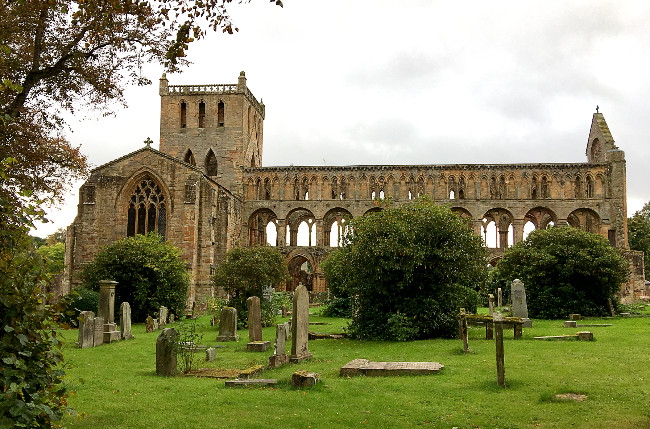
Finally crossing the border into Scotland, we stopped to admire the once beautiful Jedburgh Abbey, a victim of the many wars and pillaging from the 1300s until the Reformation in 1560. Founded by the Augustinian monks in 1138, the Abbey has Romanesque and Gothic features since it took more than 70 years to complete and had many additions and repairs. There is a visitor centre which contains artefacts found during excavations, but we were on a tight schedule with no time to visit.
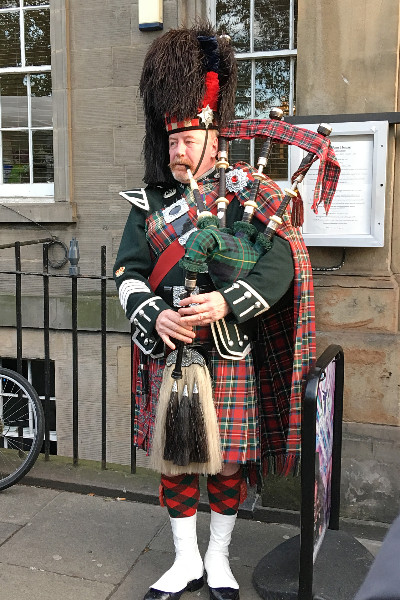
An optional extra that evening, after we settled in at our Edinburgh hotel, was a traditional Scottish night out with Highland dancers, bagpipers and the obligatory Ceremony of the Haggis. We were piped in as we arrived and settled down for a great evening of entertainment as well as the chance to finally sample the legendary Haggis. It wasn’t that bad actually, and I had some more for breakfast the next day!


